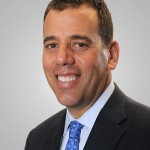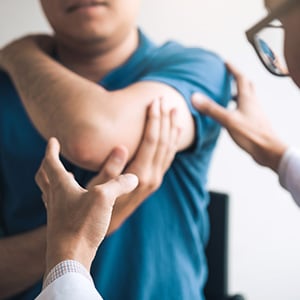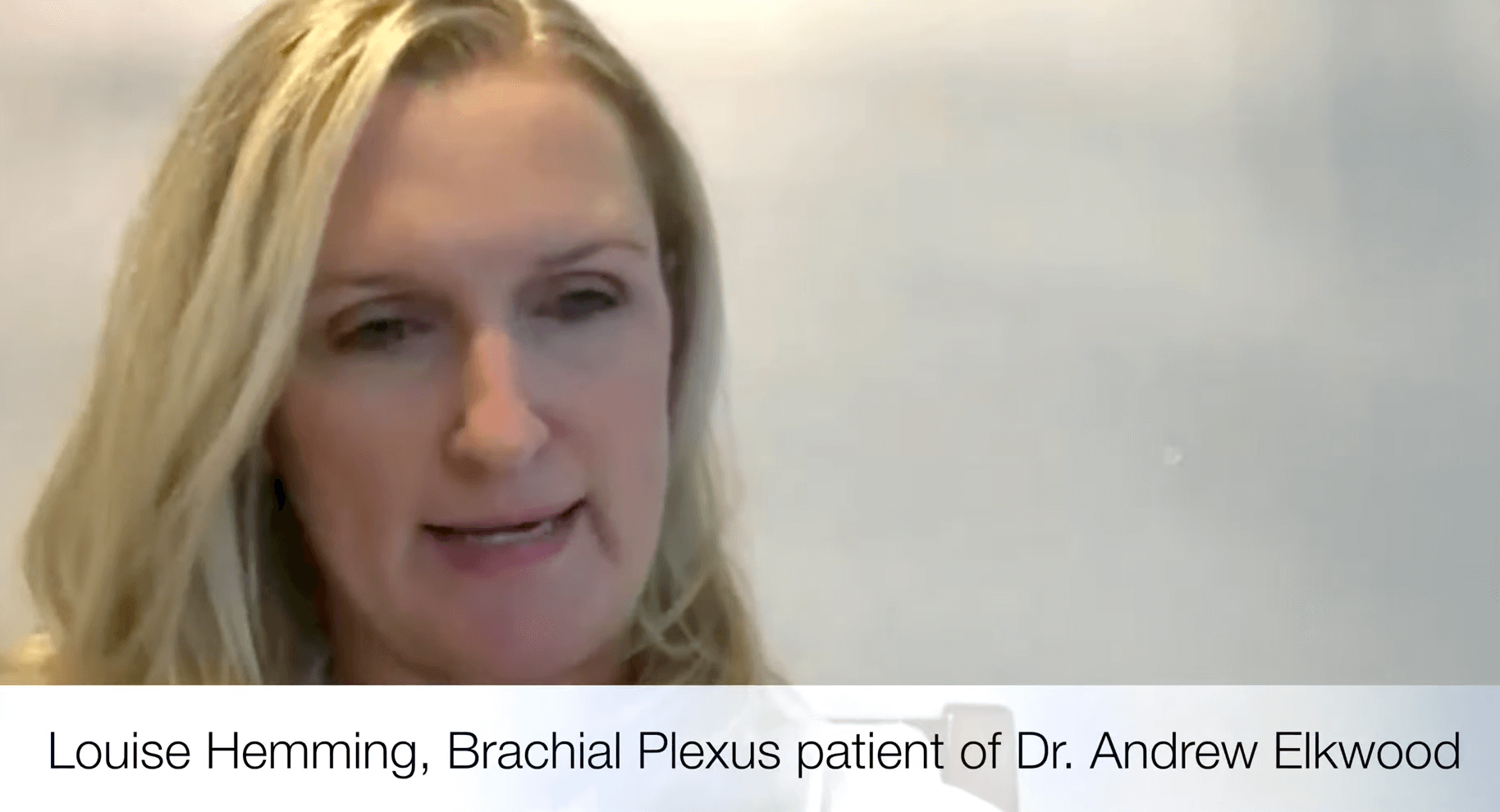The Soloist of Brachial Plexus Injury Treatment – Q&A with Dr. Andrew Elkwood
Dr. Andrew Elkwood of The Institute for Advanced Reconstruction is an expert brachial plexus injury specialist in New Jersey. In his nearly 20 years of medical practice, he has successfully treated countless patients with brachial plexus injuries, including the most complex cases. Dr. Elkwood is the founder and Chairman of the Center for the Treatment of Paralysis and Reconstructive Nerve Surgery at the Jersey Shore Medical Center, which was established to deal with brachial plexus and other nerve injuries. Dr. Elkwood and his colleagues at The Institute for Advanced Reconstruction are among the few or only experts nationally and worldwide to perform all aspects of reconstructive procedures.
In addition to conducting both surgical procedures and research, the mission of the Center is to apply these same techniques to other nerve injuries, such as those to the spinal cord and those resulting from stroke. Physicians at the Center also perform Bell’s palsy surgery treatment, radial and ulnar nerve surgery, foot drop treatment, and an entire range of other nerve reconstruction procedures.
What is brachial plexus injury?
The brachial plexus (brachial means arm; plexus means communication or meeting point) refers to the nerves that exit the cervical spine and pass down to the shoulder and arm. This network of nerves conducts signals from the spinal cord to the shoulder, arm, and hand. Brachial plexus injuries are caused by damage to those nerves. These injuries are not uncommon in adults and are mostly due to trauma. However, there are other injuries similar to, but not necessarily to, the brachial plexus. Brachial plexus is the procedure for which we have received the most attention, but my focus is all peripheral nerve injuries—from the face down to the toes.
Can you explain the various procedures you do for brachial plexus treatment?
Depending upon the seriousness of the injury, treatments for brachial plexus injury range from a “wait and see approach,” with physical therapy, to complex surgical reconstruction. At the Institute for Advanced Reconstruction, we also perform nerve transplant surgery to help patients who have suffered massive injuries to the brachial plexus, or other types of paralysis.
Can you clarify the various procedures?
Technically, a transplant is transferring something from one place to another. (In reality, the medical profession considers transplant taking from one person to another.) Taking something from within the body and putting it somewhere else is actually considered grafting. A transfer is taking a nerve from the general locale and using it within that locale, without completely disconnecting that nerve. I perform all of these procedures.
A patient’s surgical treatment regimen needs to be personalized, as it is often a complex, multi-step undertaking. Some patients are not candidates for nerve surgery, and some patients have maximized the benefits from nerve surgery, but if necessary, the plan should not end there. There are many procedures that can be undertaken to help. Muscle transfers, tendon transfers, muscle flaps, and joint fusion are some of the procedures that may also benefit patients with paralysis.
What advice would you give to those seeking treatment for brachial plexus injury?
As with any illness or injury, the type of treatment selected is potentially a very emotional topic. Because of the complexity of the treatment, I believe the most important aspect of a search for care is to consider a complete approach to a solution, rather than a solely compartmentalized one.
Using a true team approach to care is the hallmark of our practice. You need a team to integrate all the modalities I have described. There are very few institutions that truly use this approach. I consider myself a “soloist” in brachial plexus and peripheral nerve surgery procedures. I personally perform all of these procedures with my team’s support. By being the lead surgeon in each of these modalities, I can best integrate an overall care plan for the patient. This is very critical and counter to those who advertise the “team approach,” but merely hand the patient off from one team member to another.
You call yourself a “soloist” of brachial plexus surgery. What exactly do you mean?
I know of no other surgeon that performs all aspects of this type of surgery. There are a number of steps and surgeries I explore with every patient, and I won’t quit until every treatment, or surgical option has been considered and, if relevant, performed.
You referred to the various surgeries you perform for brachial plexus injury. What are they necessary for?
There is a hierarchy of care. Ideally, I want to get the patient as close to the way God designed him or her as possible. Sometimes, additional nerve surgeries are necessary. Often I do muscle transfers, tendon transfers, muscle flaps, and joint fusion.
In the majority of cases, I have to go beyond the first and most obvious steps to ensure the best possible results. One procedure results in improvement, but to maximize results, a patient often requires a multi-faceted approach. It’s a process, not an event. There are multiple goals: One goal is to return movement; then, and another goal is to restore feeling.
The most important goal, which is often overlooked, is to decrease pain. Paralysis can be very painful. Most patient complaints aren’t the paralysis, it’s the pain. You know the feeling when you hit your funny bone, and that initial pain takes your breath away. Imagine hitting your funny bone and living with that initial pain 24/7. Alleviating that agony alone is huge.
With so many possible procedures, how do you define success?
The way I define success is that patients are happy they had surgery. If they don’t need to take narcotics for pain, if they gain movement—they’re happy. If there is an improvement in their quality of life—they’re happy. I am proud to say that the vast majority of my patients are glad that they had surgery and would do it again.
Can you give a specific example of what sets you apart in your approach to brachial plexus surgery?
I treated a college student from North Carolina with a gunshot wound who had previously undergone a vascular reconstruction of his right arm. The fact the doctors kept his arm alive was fantastic. However, his arm was limp, basically useless. His doctors, who had, after all, saved his arm, doubted there was anything else that could be done. Unfortunately, this is what often happens. He was referred to me through his neurologist. I did an initial surgery, and about 80% of the nerve damage was improved. But I realized more could be done (he still did not have the use of his hand). I went through the hierarchy and performed several surgeries. He got back the use of his hand. This was a young man who need not have “settled” for a partial cure or get sent on his way because a surgeon couldn’t advise him beyond that person’s specialty.
Why did you take on the aspect of multi-level care of this injury?
I see, and treat, these procedures from “soup to nuts.” It’s just the way I see the world. That’s why, for example, in addition to my medical training, I went to Columbia University to get my MBA—to perfect my understanding of health policy issues. As remarkable as it may seem, nerve surgery can be unsophisticated in a certain sense. These days, medical professionals tend to be specialized, so often, the care is not particularly integrated. Very few want to take on complex, multi-layered procedures. My interest is in system accessibility: filling the gaps.
Is there a final message you want to communicate?
From the least to most complicated cases, I am dedicated to returning patients to the best quality of life possible. I have devoted my career to this specialized surgery, and hope that this explanation will assist those who require brachial plexus treatment. I particularly pride myself in taking care of patients who have been told that nothing can be done, or that they have maximized their treatment, but I can take them to the next level. It’s rare that I see someone that I say there is nothing I can do. I’m going to get them better than they were—that’s my obsession.
About the Author: Dr. Andrew Elkwood, MD, FACS
Dr. Andrew Elkwood, MD, FACs, is board certified in plastic surgery and general and is a Fellow of the American College of Surgeons. Additionally, he is the founder and director of the Center for Treatment of Paralysis and Reconstructive Surgery at Jersey Shore Medical Center.




